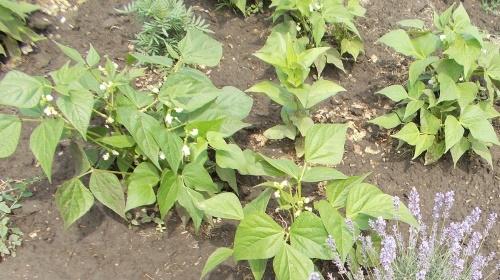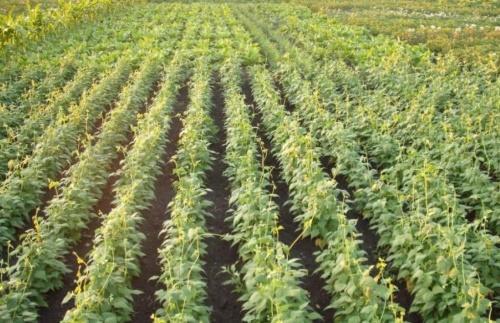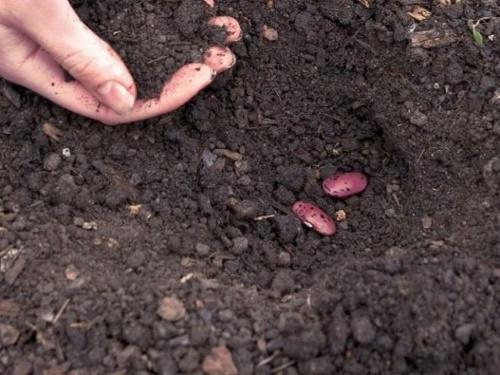How to grow beans: briefly about planting and care in the open field
 Without beans, borscht is no longer borsch, but just soup, and the bean puree is very tasty and satisfying. Lovers of these dishes prefer to have beans at home, so they don't buy them, but plant them in the beds. The crop grows well, the yield is good, and moreover, most of the care falls on the beginning of the growing season, especially for bush varieties. As they grow, they cover the soil almost completely and kill most weeds, keeping weeding to a minimum. Knowing the simple secrets of how to grow beans, you can not only stock up on delicious beans, but your own planting material.
Without beans, borscht is no longer borsch, but just soup, and the bean puree is very tasty and satisfying. Lovers of these dishes prefer to have beans at home, so they don't buy them, but plant them in the beds. The crop grows well, the yield is good, and moreover, most of the care falls on the beginning of the growing season, especially for bush varieties. As they grow, they cover the soil almost completely and kill most weeds, keeping weeding to a minimum. Knowing the simple secrets of how to grow beans, you can not only stock up on delicious beans, but your own planting material.
Where to plant beans?

Do not plant beans in an area where other legumes, as well as alfalfa and sunflowers, grew in front of them. Good predecessors of the plant are nightshades, potatoes, onions, carrots, tomatoes, peppers.
With respect to the soil, it should be light and nutritious, with neutral acidity. Compost, humus and sand should be added to poor clay soil. For the autumn digging, when preparing the beds, mineral fertilizers are also applied in the form ammophos or an autumn mineral complex.
When to plant beans?
 Beans are grown mainly by planting in open ground. Most varieties do not tolerate transplanting seedlings to the garden well. Given its thermophilic nature and absolute intolerance to low temperatures, planting should be started when the frost has passed. The optimum temperature for seed germination is at least 18 ° C. Depending on the region, this may be the end of April - May.
Beans are grown mainly by planting in open ground. Most varieties do not tolerate transplanting seedlings to the garden well. Given its thermophilic nature and absolute intolerance to low temperatures, planting should be started when the frost has passed. The optimum temperature for seed germination is at least 18 ° C. Depending on the region, this may be the end of April - May.
According to folklore, you can plant beans in the garden after the cherries bloom.
How to grow beans: planting and care rules
 Most often, beans are planted dry: if it is warm and humid, they can quickly sprout and suffer from recurrent frosts. Late planting is also possible with germinated seeds, but requires maintaining moisture and watering.
Most often, beans are planted dry: if it is warm and humid, they can quickly sprout and suffer from recurrent frosts. Late planting is also possible with germinated seeds, but requires maintaining moisture and watering.
Large beans need deep planting, otherwise they will not be able to keep the bush in the ground. The holes must be made at least 5 cm deep, throwing 3-4 beans into each. Place the holes in a checkerboard pattern - so all the bushes have enough light. When the beans sprout, two of the strongest are left, and the rest are pulled out.
 Caring for bean beds includes:
Caring for bean beds includes:
- If there is no rain, water when the soil dries up to 3 cm deep.
- Weed and loosen young crops carefully. After the growth of the bushes and the closing of the rows, the need for this disappears.
- Feed twice with mineral fertilizer. The first time, when a pair of leaves grows - with a phosphorus-potassium preparation, the second, at the beginning of flowering, with potassium chloride.
Asparagus beans need a garter. It is better to grow them on a trellis.
In late summer, when the pods turn yellow and dry, the beans are ripped out and husked.If necessary, the plants are dried, and then the beans are husked. After additional drying, they are poured into glass jars, covered with a lid and stored in a dark place.